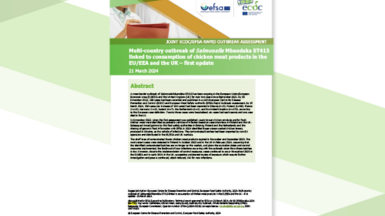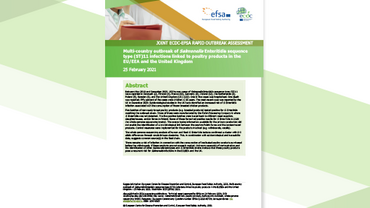Rapid risk assessment: Potential resurgence of highly pathogenic H5N1 avian influenza
The increased reports of A(H5N1) outbreaks in poultry and wild bird populations, and the emergence of a further evolved lineage of the virus in poultry in some countries, do not change the current assessment of the risk to human health. This is still considered to be very low in EU/EEA countries. However, vigilance for avian influenza in domestic poultry and wild birds in Europe remains important. In the countries where A(H5N1) is entrenched in wild bird populations and is occasionally transmitted to domestic poultry, rare and sporadic human infections in individuals who have contact with this poultry (or wild birds) are to be expected and should be considered as background cases. Constant vigilance should be maintained for any enlargement in A(H5N1) cluster size or for individual human cases outside of the countries where the virus is entrenched in poultry.
Executive Summary
The risk assessment was prompted by a report from the United Nations Food and Agricultural Organization on a potential increase in A(H5N1). The FAO report highlights an outbreak of A(H5N1) in poultry and wild bird population in Southeast Asia "with unpredictable risks to human health".
Through consultations with various experts, ECDC recognises that any increase in outbreaks or changes of distribution of the outbreaks need to be monitored. However, in this particular case and from a human health perspective, the assessment is that "there are currently no indications of any significant change in the human epidemiology associated with the clade or strain of A(H5N1)."







